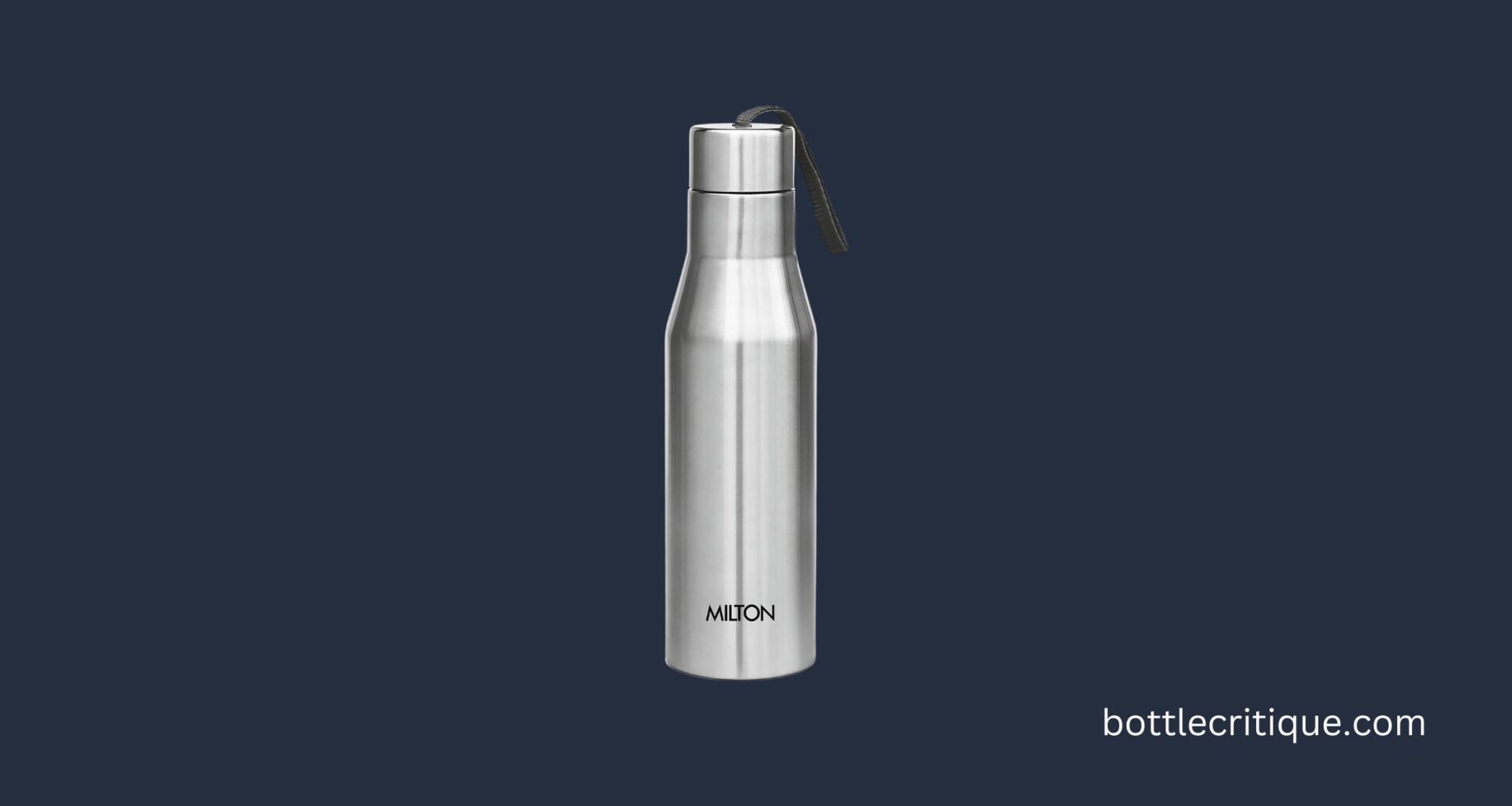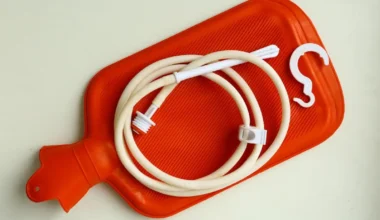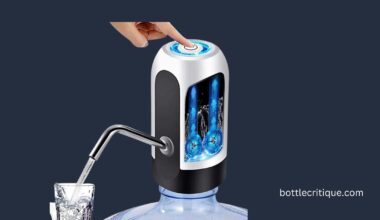Think about the countless stainless steel water bottles you have used and discarded over the years. Now, wouldn’t it be wonderful if you could contribute to a greener planet by recycling these bottles instead of tossing them into the trash? In this article, we’ll guide you on how to recycle your stainless steel water bottle in a few simple steps. By doing this, not only will you minimize waste, but you’re also taking a vital step towards sustainable living. So, let’s get started!
Why Recycle Stainless Steel Water Bottles?
Consider this: every stainless steel water bottle that ends up in a landfill is a missed opportunity. These durable items are designed to last, but what happens when they finally wear out? That’s where recycling comes in. It’s not just about keeping unnecessary waste out of our environment, it’s also about reusing valuable resources.
Stainless steel is 100% recyclable, meaning every bit of your old water bottle can become something new. So, when your trusty bottle has served its time, don’t toss it in the trash—recycle it.
“Recycling stainless steel helps conserve resources, reduces waste, and can even save you money.”
Recycling is an essential step towards sustainability. It conserves natural resources, saves energy, and reduces the need for landfill space. Plus, it can save you money. Many recycling centers offer cash back for stainless steel items.
So, the next time your stainless steel water bottle has reached the end of its life, remember: recycle, don’t discard.
Benefits of Recycling Stainless Steel Water Bottles
Recycling your stainless steel water bottles comes with a multitude of benefits, not only for you, but for the environment as a whole. The act of recycling is a simple yet profound step towards creating a sustainable and waste-free environment.
- Economical: Recycling stainless steel is cost-effective as it saves resources, energy and reduces landfill space.
- Environmentally Friendly: It reduces the extraction of raw materials, thereby conserving natural resources and reducing greenhouse gas emissions.
- Waste Reduction: It helps in reducing the amount of waste that ends up in our landfills and oceans.
Let’s delve into these benefits a bit more:
Economical
Recycling stainless steel water bottles can save a significant amount of money. It reduces the need for new materials, thus saving the costs associated with mining and transportation. Furthermore, the recycling industry creates job opportunities, stimulating economic growth.
Environmentally Friendly
When you recycle your stainless steel water bottle, you are directly contributing to reducing pollution. The process of recycling stainless steel produces fewer emissions compared to the production of new materials, thus helping in the fight against climate change.
Waste Reduction
Every stainless steel water bottle that is recycled is one less item that ends up in a landfill or in our oceans. It helps in achieving a waste-free environment, which is exceptionally crucial in our current scenario of increased pollution.
In conclusion, recycling stainless steel water bottles is a simple act that can yield substantial benefits. Be a part of the solution. Start recycling today!
How to Prepare Your Stainless Steel Water Bottle for Recycling
Preparing your stainless steel water bottle for recycling is a straightforward process, but it’s crucial to do it right. This not only ensures that the recycling process is efficient, but also that you’re doing your part to conserve our planet’s resources.
Step 1: Empty the Bottle
Firstly, make sure to empty the bottle completely. Any leftover liquid can cause problems during the recycling process.
Step 2: Clean the Bottle
Before recycling, it’s important to clean your stainless steel water bottle thoroughly. Rinse it out with warm water and mild dish soap, ensuring to remove any residue. This step is key as it prevents contamination of other recyclables.
Step 3: Separate Components
Most stainless steel water bottles have parts made from different materials, such as plastic lids or silicone seals. You’ll need to remove and separate these components, as they might need to be recycled differently.
Step 4: Check Local Recycling Guidelines
Before recycling your stainless steel water bottle, check with your local waste management facility or recycling program. Some places may require you to drop off your bottle at a specific location or may not recycle stainless steel at all.
Remember, it’s not just about recycling; it’s about recycling correctly. By preparing your stainless steel water bottle properly for recycling, you’re contributing to a healthier, more sustainable planet.
Finding a Stainless Steel Water Bottle Recycling Facility Near You
Locating a recycling facility that accepts stainless steel water bottles in your vicinity may seem daunting, but it doesn’t have to be. There are several resources available to make this task easier:
- Call your local recycling center: Not all recycling centers accept stainless steel, so it’s best to call ahead. Ask if they accept stainless steel water bottles for recycling.
- Online search: Utilize online tools like Earth911 or RecyclerFinder. These tools provide a directory of recycling facilities and can help you locate one near you that accepts stainless steel.
- Local government resources: Many local governments provide resources to help residents recycle properly. Check your local government’s website for information or contact them directly.
Remember, it’s crucial to clean the water bottle thoroughly before recycling. Residue can contaminate the recycling process.
Alternative Ways to Recycle Stainless Steel Water Bottles
While recycling centers are the most common destination for your discarded stainless steel water bottles, you have other options too. These alternatives not only benefit the environment but also give a new purpose to your used water bottles. Let’s explore some of these eco-friendly paths together.
Donate Your Water Bottles
If your stainless steel water bottle is still in good condition, consider donating it. Many charities, homeless shelters, and thrift stores welcome these donations to support individuals in need.
Repurpose as Storage Containers
Stainless steel water bottles make excellent storage containers. They can be utilized to store dry goods like lentils, beans, and pasta, or even as quaint planters for small indoor plants. Their durability and airtight seal make them perfect for these tasks.
Create DIY Craft Projects
Unleash your creativity by transforming your old water bottles into unique craft projects. They can be turned into decorative vases, candle holders, or even painted to create personalized desk accessories. This is not only beneficial for the environment but also a fun and creative outlet.
Trade-In Programs
Some companies offer trade-in programs for their stainless steel water bottles. You return the used bottle and they either recycle it or refurbish it for further use. In return, you may receive a discount on your next purchase. It’s a win-win situation for both you and the environment.
Remember, the goal is to keep these durable items out of the landfill. By recycling or repurposing your stainless steel water bottles, you’re contributing to a more sustainable and healthier planet.
Ways to Repurpose Your Stainless Steel Water Bottle
Before we get into the nitty-gritty of recycling, let’s explore some creative ways to repurpose your stainless steel water bottle. It’s a great opportunity to not only reduce waste but also to create something functional or decorative for your home.
1. A Stylish Vase
With a bit of creativity, your stainless steel water bottle can transform into a modern, sleek vase. All you need to do is clean it thoroughly and maybe give it a fresh coat of paint. It’s perfect for displaying your fresh blooms or dried flowers.
2. Handy Kitchen Canister
Why not use your old water bottle as a kitchen canister? It can safely store your dry goods like pasta, beans, or rice. Just ensure it’s clean and dry before you fill it up. Plus, it’s an eco-friendly alternative to plastic containers.
3. DIY Candle Holder
Looking for a fun DIY project? Try turning your water bottle into a candle holder. Cut the top off, sand the edges for safety, and voilà, you have a unique candle holder.
4. Spare Change Jar
Save those pennies in your stainless steel water bottle. It’s an easy and practical way to keep your spare change organized and out of sight.
Now, if your stainless steel water bottle is beyond reuse or repair, recycling is the next best thing. Your contribution to recycling stainless steel can make a significant difference in conserving resources and reducing environmental impact. Let’s dive into how you can recycle your stainless steel water bottle.
Tips for Maintaining Your Stainless Steel Water Bottle to Prolong its Life
Maintaining your stainless steel water bottle effectively can significantly extend its life. This not only saves you money over time, but also reduces the need for recycling, further benefiting the environment. Here are some tips to help you keep your bottle in tip-top shape:
- Cleaning: Regular cleaning prevents the build-up of bacteria and unpleasant odors. Use warm, soapy water and a soft brush. Avoid harsh chemicals or abrasive scrubbers which can damage the surface of your bottle.
- Drying: It’s essential to dry your bottle thoroughly after each wash. Leaving it damp can lead to mold growth. If possible, air dry it upside down to allow any remaining water to drain out.
- Storage: When not in use, store your bottle with the lid off. This allows air to circulate and helps to prevent any musty odors from developing.
Remember, a well-maintained stainless steel water bottle not only lasts longer but also ensures a healthier drinking experience.
Dealing with Stains and Odors
Sometimes, despite regular cleaning, stainless steel water bottles can develop stains or retain odors. Not to worry – there are easy ways to tackle these issues:
- Natural Cleaning Solution: For stubborn stains or lingering smells, a solution of baking soda and vinegar works wonders. Fill the bottle with this mixture, let it sit for a few hours, then rinse thoroughly. Be sure to dry the bottle properly after this process.
- Preventing Stains: To avoid stains, rinse your bottle immediately after use, especially if you’ve had acidic drinks like fruit juices. Acid can cause discoloration in stainless steel.
In conclusion, a little extra care can prolong the life of your stainless steel water bottle, reducing the need for replacement and, consequently, recycling. So, make maintenance a routine and enjoy the benefits of a durable, eco-friendly hydration solution.
Environmental Impact of Not Recycling Stainless Steel Water Bottles
Think about this: If you don’t recycle your stainless steel water bottle, it could end up in a landfill. When left in such environments, it could take up to a whopping 1 million years to decompose! An enormous amount of energy is also wasted in the process of manufacturing new bottles rather than recycling the old ones. And we haven’t even touched on the harmful emissions and pollution. Let’s delve a little deeper into this issue.
The Destructive Energy Consumption
Producing a brand new stainless steel bottle requires an incredible amount of energy. To put it in perspective, recycling a single bottle can conserve enough energy to power a 60-watt light bulb for up to 26 hours. Imagine the energy saving potential if we all decided to recycle!
The Unnecessary Emission of Greenhouse Gases
Did you know that the production of new stainless steel bottles contributes significantly to greenhouse gas emissions? By simply recycling, we can cut these emissions by a staggering 70%!
Contribution to Landfills and Pollution
Stainless steel bottles that are not recycled will most likely end up in our landfills, contributing to the already burgeoning waste problem. Toxic chemicals can be released into the environment, polluting our air, soil, and water.
Clearly, the environmental impact of not recycling stainless steel water bottles is dire. But it’s not all doom and gloom. You can make a difference by choosing to recycle your stainless steel water bottles. It’s a small act, but it can go a long way in preserving our planet for future generations.
Myths and Facts about Recycling Stainless Steel Water Bottles
It’s a common misconception that stainless steel bottles are not recyclable. However, the fact is, they are! Let’s debunk a few myths and provide you with some solid facts about recycling stainless steel water bottles.
Myth 1: Stainless steel is not recyclable
Fact: This is a myth. Stainless steel is 100% recyclable. The properties of stainless steel allow it to be recycled without any degradation. This means a recycled stainless steel bottle will be just as strong and durable as a new one.
Myth 2: Recycling stainless steel is hard
Fact: On the contrary, recycling stainless steel is straightforward. It can be tossed into your recycling bin just like any other recyclable material. Be sure to check local recycling rules as procedures can vary.
Myth 3: Stainless steel bottles can’t be recycled with other metals
Fact: This is not entirely true. While it’s correct that different metals are often sorted for recycling, stainless steel can typically be mixed with other metals. It’s later separated using a high-powered magnet at the recycling plant.
Myth 4: It’s better to reuse than recycle
Fact: Yes, reusing is often preferable to recycling because it reduces the energy used in the recycling process. However, when your stainless steel bottle reaches the end of its lifespan, recycling is the environmentally friendly choice.
Now that we’ve debunked these myths, we hope you feel more confident about recycling your stainless steel water bottles. Remember, each small step towards recycling makes a significant impact on our environment.






